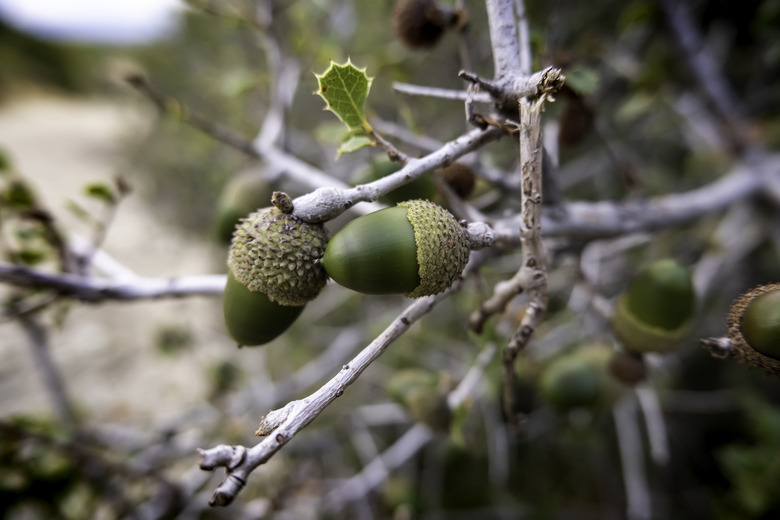How To Stop Oak Acorn Production
We may receive a commission on purchases made from links.
If you have oak trees on your property, you may be wondering how to stop oak acorns from littering your yard. Though they play an interesting role in the life cycle of an oak tree, acorns can be quite a nuisance when it comes to lawn care. Fortunately, there are some steps you can take to prevent them.
Why Oak Trees Make Acorns
Why Oak
Trees Make Acorns
Oaks (Quercus spp.) are slow-growing hardwood trees, which means they may not fruit for the first 20 years after sprouting. Once they begin to flower and drop acorns, they go through an irregular cycle of feast and famine every two to five years. The years when oak trees drop large amounts of acorns are known as "mast" years, and a single mature tree has been known to drop as many as 10,000 acorns.
Oak trees are pollinated by the wind, and all oak trees have the potential to produce acorns.
Stopping Acorn Production
Stopping
Acorn Production
The first and most drastic option to stop acorn production is to cut down all oak trees on your property. This is obviously not a simple, affordable or environmentally friendly option, and you likely don't want to get rid of your trees ... just the acorns they produce.
If you pursue tree removal, be aware that tree removal specialists do not commonly include the service of removing the stump. Stumps left untreated and ignored in the ground can attract termites, ground wasps and rot. If a stump is removed but the empty root canals underground are not properly filled, they can create dangerous sinkholes.
Using a Fruiting Regulator
Using a Fruiting Regulator
The second option is to apply a fruiting regulator to every single blossom on the tree each spring. This can be difficult for several reasons. Oak blossoms are not as bright and noticeable as cherry or pear trees. Instead, the flowers are characterized by light-green buds studded along thin strands at the end of branches. These can easily blend into the budding leaf bundles and can be difficult to spot when they are higher in the tree.
For the regulator to be effective, you must wait until spring before the tree has started to leaf, and temperatures must be 65 degrees Fahrenheit or higher consistently throughout the day. Applying too early or too late in the season will cause the spray to be ineffective, and any blossoms not sprayed will fruit and create acorns as normal. The regulator must be applied every year, and there will still be a small acorn crop the first year it is applied. The height of fully grown trees can make home spray equipment useless, requiring professional services each year.
Ultimately, attempting to stop an oak tree from making acorns is an expensive and labor-intensive process regardless of which route you choose, but it is possible.
Alternative Options for Acorns
Alternative
Options for Acorns
Another option is to make peace with the acorn crop each year and find creative ways to avoid damage to vehicles or nuisances on concrete and lawns. You could arrange a tarp or permanent roof to direct falling acorns away from vehicles and sidewalks. Alternatively, you could make a practice of harvesting the acorns by shaking them out of the tree all at once and into containers to minimize painful drops.
Acorns can be ground into flour and baked. They make great animal feed for deer and, once shelled, for birds. Acorns make festive vase fillers and are great material for arts and crafts. You can even donate your acorn harvest to some local zoos and wildlife organizations.
